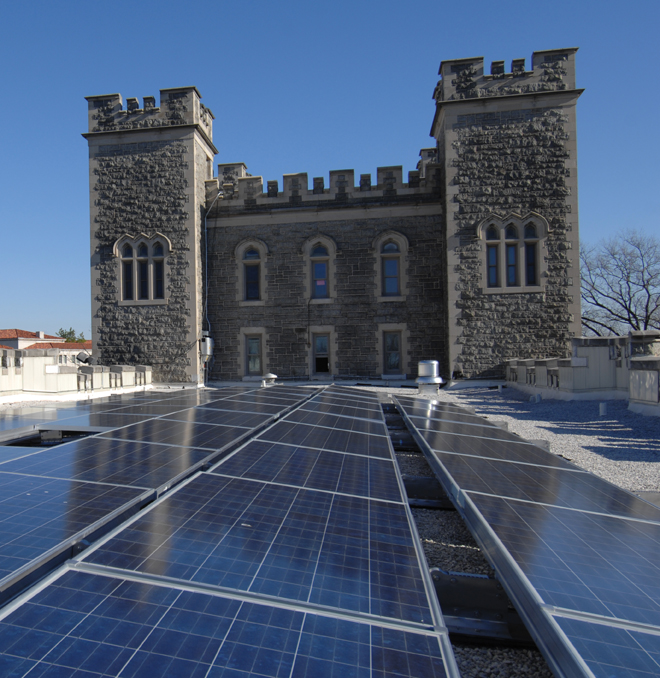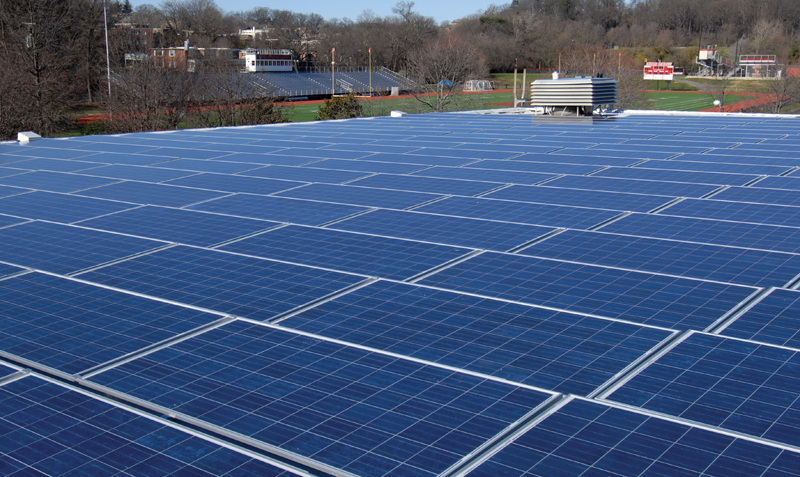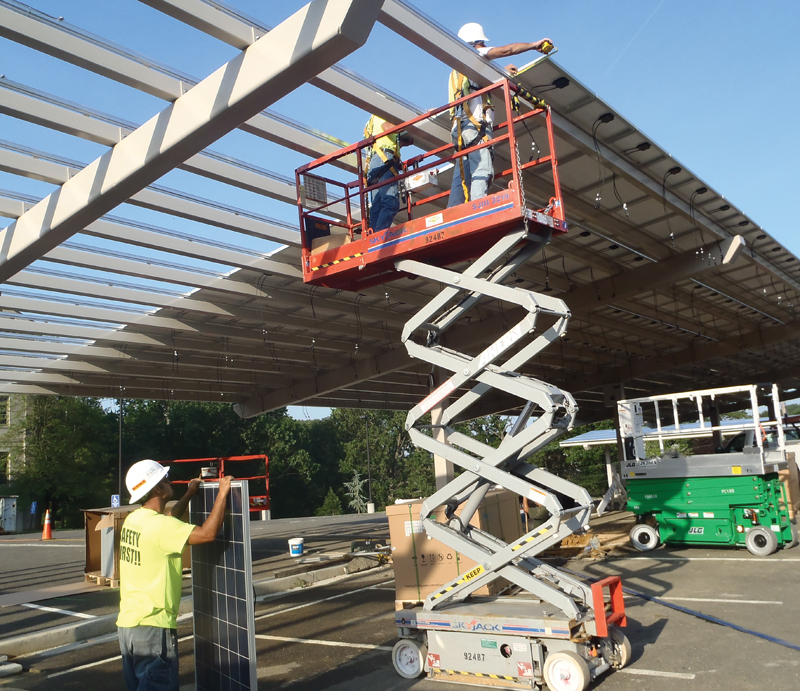Back Issues
Old school solarThe Catholic University of America in Washington D.C., along with installation partner Standard Solar, took on a demanding project integrating a solar power system on seven campus buildings—one of which is more than a century old. By
Diane Mettler
Professors at the time couldn't have imagined that 124 years later the university would become a beacon for sustainability and house a 682 kW solar facility, the largest in D.C. C.J. Colavito, director of engineering for Standard Solar, which handled the solar installation, says integrating a solar power system onto seven campus buildings—one of them more than a century old—was technically complex, requiring a variety of skills and different types of technology, but it was also incredibly satisfying. "Catholic University has a very targeted sustainability effort, and they're one of the few customers whose main reason for installing solar power is not to save money," he adds. "The primary reason is to be more ecologically friendly and to support the student body's demand for green energy and a more sustainable campus." Like many projects, it started with solid relationships. Standard Solar had a relationship with Washington Gas Energy Systems, the larges electricity supplier in the state of Maryland and Washington D.C. Both Washington Gas and Standard Solar had existing relationships with Catholic University. "When we brought Washington Gas in as our system owner/PPA provider, it went together very smoothly," says Colavito. "It also helped that Catholic University has a very smart and politically savvy energy manager that really ran the project and pushed it through the university to get all the proper approvals." It's a good thing that all the players got along so well because the three-phase project had numerous and unique challenges. "One of the most challenging things on the development side was that the campus has many buildings, and we probably looked at over 30 different buildings to site the solar on for Phase 1, before selecting the final four that we went with," says Colavito. "We did preliminary drawings and PV system layouts for over 30 buildings, and we probably changed them all twice." When choosing campus buildings, there were a number of considerations for Standard Solar including: • Structural capacity. Could the roof support the ballasted PV system? • Rooftop condition. Would the roofs hold up for the 20 years the PV system would be in place? • Irregular shapes. Would a tall, skinny, or odd-shaped roof support the rooftop system? • Building financing. Would the current bonds/financing of various buildings allow for this kind of project. "Financing of the building and the contingencies around that financing invalidated about half the buildings on campus," says Colavito. Seven buildings were selected to house the total 680 kW of solar power, and about 90 percent is on three buildings. "That means we had four buildings that were tiny—not exactly ideal installs. They required even more project management and engineering effort than the larger buildings. So it was very challenging," says Colavito. For Phase 1, Standard Solar selected DuFour Athletic Center (122 kW), Aquinas Hall (104 kW), Flather Hall (35 kW), and Gibbons Hall (32 kW), and construction got underway in 2009.
You had to go up the stairwell in the middle and crawl through a small window that was only about two feet wide. You had to wiggle through to get up there, making site visits and development and planning tricky." Once construction got underway, scaffolding was erected for access, but there were new issues to address. "We had to push the solar panels out to the farthest ends of either wing, so they wouldn't get too much shading from the tower in the middle," explains Colavito. "Because of the shade, we used four separate SMA Sunny Boy 7000 string inverters to run that 32 KW system. We have two string inverters for each wing, with one dedicated to the inside half and one designated to the outside half of the system so that the shading on the inside portions from the large tower wouldn't affect the outside as much." Gibbons wasn't the only building with challenges. Aquinas is an office and classroom building, and Flather Hall is a dormitory, so there were security concerns. Standard Solar had to work very closely with the university and make sure that students weren't disrupted. "We knew exactly what days were study days, test days, and holidays, and we did our best to get in and get out without disrupting things, and we made sure the meat of our construction activity didn't happen during key times in the university schedule," says Colavito. "It also helped that the students were very interested and supportive." For phase one, Standard Solar went with Suntech solar modules. In addition to the four SMA Sunny Boy 7 kW systems used on Gibbons, Standard Solar chose Satcon inverters for DuFour—two Satcon 100 kWs and one Satcon 30 kW. Because of reroofing schedules, the DuFour Athletic Center was the only building that got additional PV during Phase 2. "We were only allowed access to one section of DuFour on Phase 1 because that was the section they planned to re-roof immediately. Then when they re-roofed another section of the building, we went in and installed another 120 kW," explains Colavito. Again Standard Solar used Suntech modules but chose Advance Energy inverters. Advance Energy makes excellent products that have high reliability and good pricing—and that's why they worked with them, says Colavito. Phase 3 wrapped up in 2012, adding an additional 268 kW in Trina Solar modules. • An additional 77 kW to DuFour— bringing the total to 319 kW, or half the PV on the campus. • 11.2 kW on Pangborn Hall, the university's engineering building • 171 kW on the O'Boyle carport manufactured by Structural Solar • 8 kW installed on the Grounds Maintenance Complex Phase 3 had challenges from the start. "We had already cherry-picked the best buildings of what was available, and we had to get creative," says Colavito. "The university was also more interested in getting some token systems for demonstration and for solar to be on some key buildings." An example was the ballasted roof mount system on Pangborn Hall. "11.2 kW is a very small system, especially in a commercial setting. We wouldn't have been able to do a job that small if it wasn't rolled in with three other sites."
|











